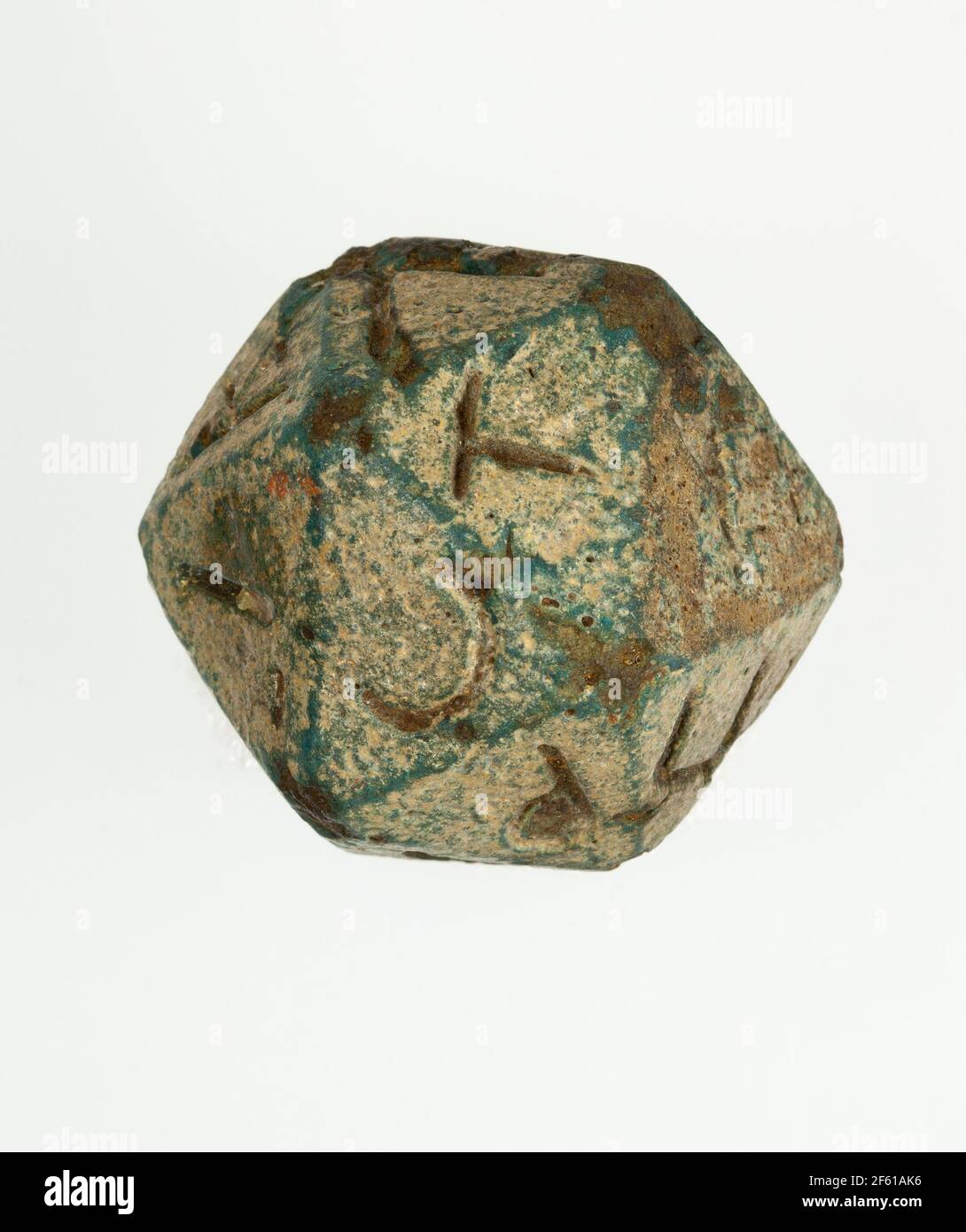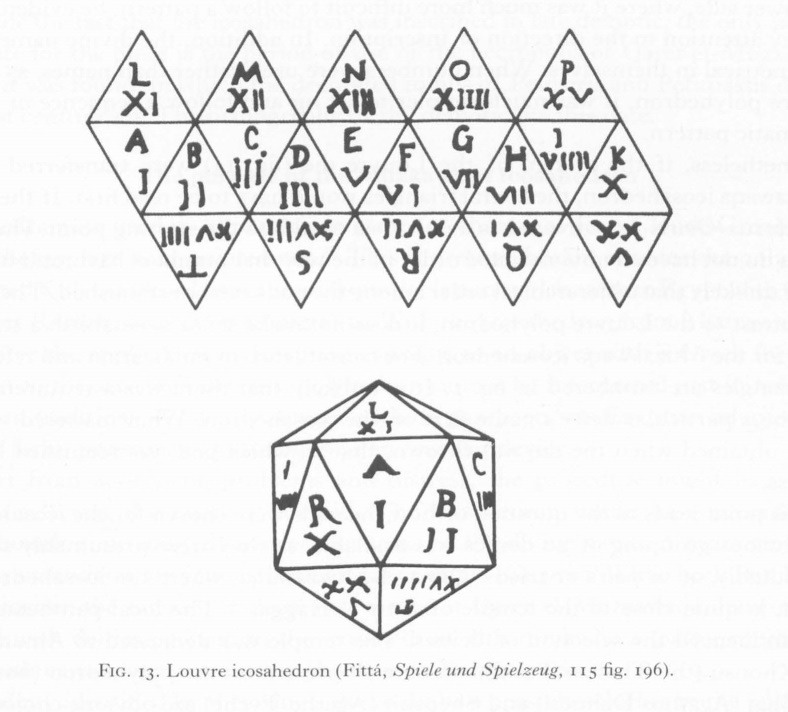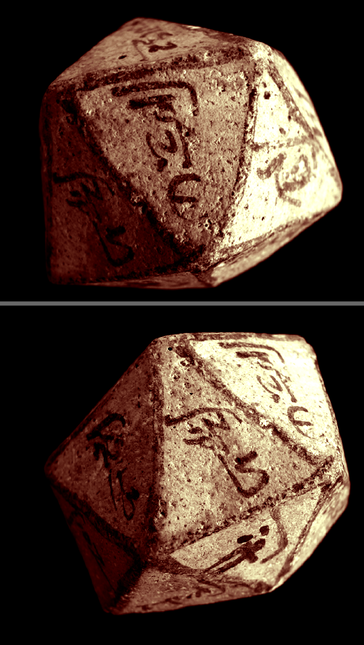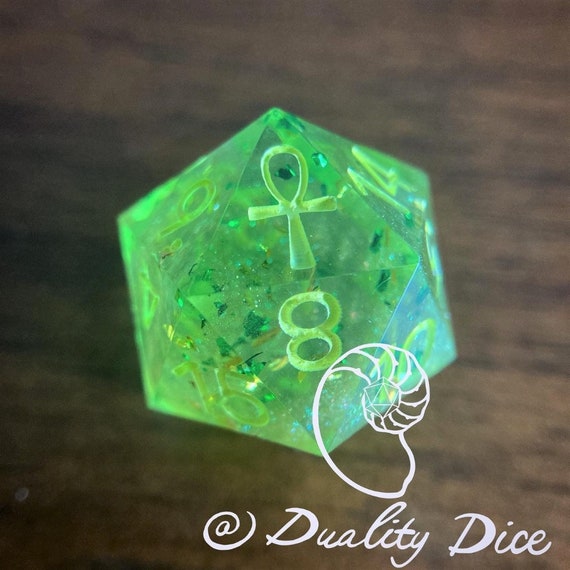Twenty-sided die (icosahedron) with faces inscribed with Greek

Download this stock image: Twenty-sided die (icosahedron) with faces inscribed with Greek letters 2nd century B.C.–4th century A.D. Ptolemaic Period–Roman Period A number of polyhedral dice made in various materials have survived from the Hellenistic and Roman periods, usually from ancient Egypt when known. Several are in the Egyptian or Greek and Roman collections at the Museum. The icosahedron – 20-sided polyhedron – is frequent. Most often each face of the die is inscribed with a number in Greek and/or Latin up to the number of faces on the polyhedron.Nothing specific about the use of these polyhedra is preserved, so - 2HHAX8X from Alamy's library of millions of high resolution stock photos, illustrations and vectors.

A Roman rock-crystal icosahedron (20-sided dice) in the Louvre – Roger Pearse
qph.cf2.quoracdn.net/main-qimg-5f4929fdbbb85216785

The icosahedron hi-res stock photography and images - Alamy

Rare Greek and Roman Polyhedral Dice With Inscribed Letters for Divination and Games, 2nd Century BC 4th Century AD
What is the origin of the 20 sided dice? - Quora

Twenty-sided Die Icosahedron With Greek iPhone 8 Case by Science Source - Science Source Prints - Website

Icosahedron - Pearson Scott Foresman Archives - PICRYL - Public Domain Media Search Engine Public Domain Image

File:Twenty-sided die (icosahedron) with faces inscribed with Greek letters MET 10.130.1158 001.jpg - Wikipedia

Icosahedron hi-res stock photography and images - Alamy

Dice - Wikiwand

A Roman rock-crystal icosahedron (20-sided dice) in the Louvre – Roger Pearse

Twenty-sided die (icosahedron) with faces inscribed with Greek

Dice - Wikiwand









/product/96/894605/1.jpg?8266)

